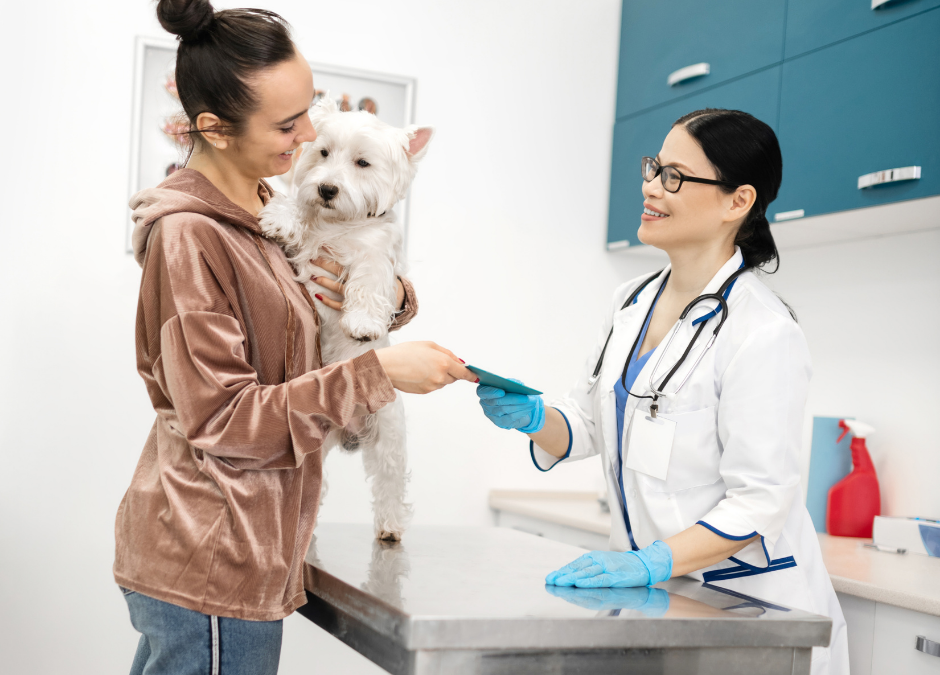Like human medicine, pets can and should receive preventative care, which is often more affordable than later treatment. By identifying concerns early, there is an increased likelihood of being a positive outcome. There are many components to preventative care, including (but is not necessarily limited to): physical exams, immunizations, parasite and heartworm preventatives, dental care, blood tests and urinalysis, and spaying or neutering. Depending on the patient’s age and history, it can be important to recommend more frequent screening of some of these components.
Physical Examinations
Physical examinations are an essential component of routine veterinary care. Abnormal findings on physical exams inform the veterinarian what line of questioning or additional diagnostic tests may be needed.
Immunizations
Vaccinating all pets according to state guidelines, their exposure potential, and daily lifestyle is essential in keeping them safe and healthy. Some experienced owners may know what vaccines to expect for their pet, but others will walk in unaware and follow any recommendations provided. To help address any client questions, we recommend having a “core” set of vaccines that you recommended for a dog (or a “core” puppy series). Then, ask the clients about their dog’s lifestyle to determine if additional vaccines such as those against Bordetella, Leptospira, and Lyme disease may be warranted.
Parasite and Heartworm Preventative & Tests
The American Heartworm Society recommends that all dogs be on year-round preventative (check out the full guidelines HERE). However, many clients, especially those in Northern states where mosquitos are limited in prevalence during the winter months, may not want to purchase this protection. To help encourage compliance, we recommend discussing the other parasites the monthly Macrocyclic Lactone preventatives are effective against. If the client is still hesitant, it may help to discuss the cost of heartworm treatment and describe how the “preventatives” are actually killing any L3 and early L4 dirofilaria. By discussing with a pet’s owners you can also evaluate the need or best recommendation for a flea and tick control product. With both heartworm preventative, as well as flea and tick preventative – owner compliance can be increased with longer-lasting options that minimize relying on an owner to remember to give a pill.
Compliance Tip: Consider offering bundle discounts or payment plans on core preventative pet care; these bundles can include as many or as few items as your clinic desires. Through bundling these expenses, owners are better able to plan and budget for their pet’s care.
Dental Care
Dental hygiene is increasingly recognized as important to a dog’s overall health and comfort. However, many dog owners do not realize that oral hygiene is a critical component of pet preventative care. Start discussing dental care with clients from their first puppy visit. In doing so, you can encourage good habits such as teeth brushing and recommending specific dental treats or chews. Furthermore, this allows owners to anticipate and budget for this expense.
Additional Preventative Measures to Consider:
Blood Tests & Urinalysis
Running bloodwork and a urinalysis enable the veterinarian to preview a patient’s internal organ functioning. Including routine testing as a component of preventative care in your clinic provides reassurance that a patient’s organs are functioning properly. Additionally, you are more likely to identify abnormalities earlier by completing regular bloodwork before more obvious clinical signs develop. This early identification can markedly improve a patient’s prognosis and decrease lasting complications. To help encourage clients to get on-board with this expense, consider bundling it into the price of a preventative care package. Similarly, completing bloodwork prior to anesthesia for a dental cleaning can help owners understand and accept this expense.
Spaying or Neutering
While spaying or neutering a dog is an elective procedure that some clients may choose to forgo, these procedures have been associated with numerous health benefits. These surgeries are associated with a decreased risk of getting certain types of cancer, infections, and prostatitis (in male dogs). While some owners are against the procedures or plan to breed their dog, it is vital to convey the risks associated with leaving their dog intact. Finally, during these conversations, it is also important to discuss at what age you would recommend the patient be spayed/ neutered.
.

